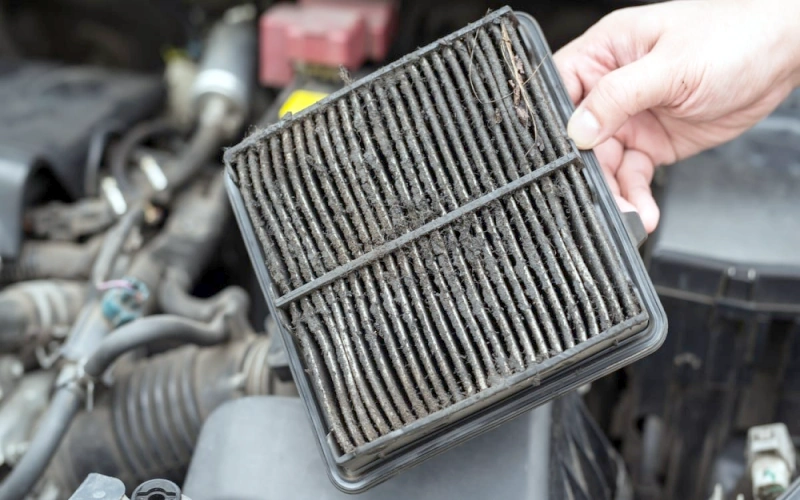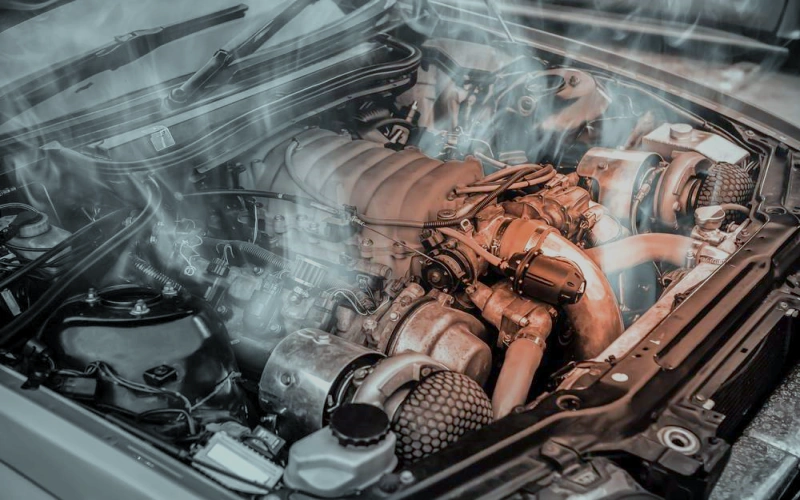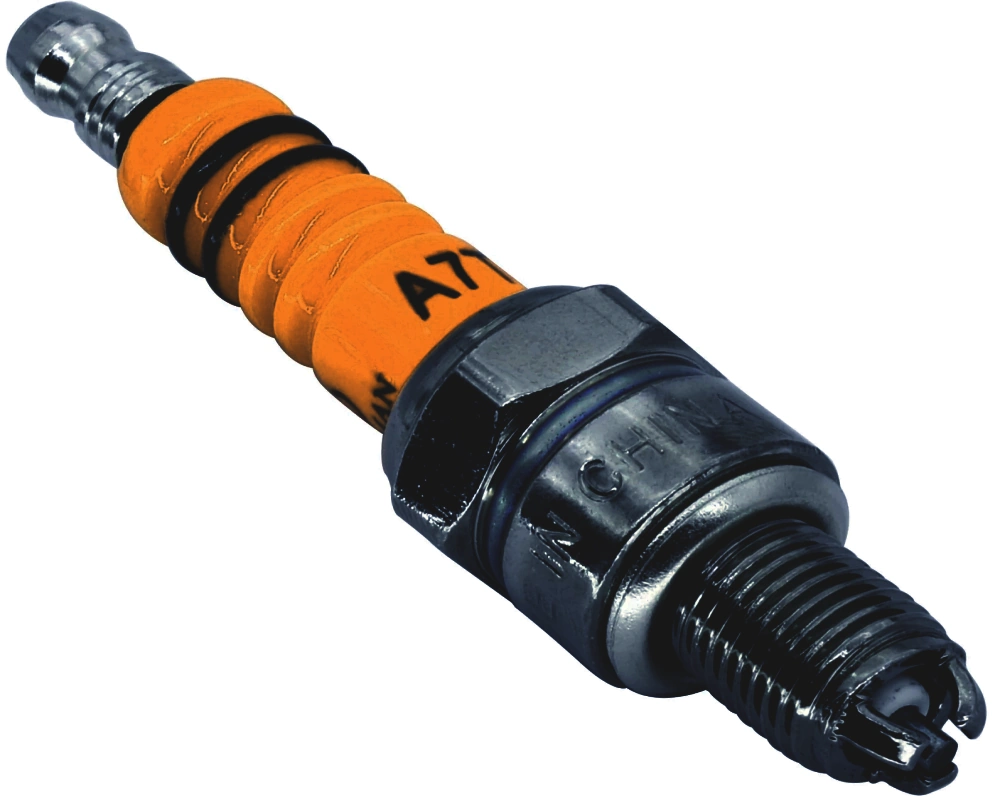Overheating is a condition that occurs when the engine in an all-terrain vehicle (ATV) produces too much heat. This can cause the engine to fail, and in extreme cases, can lead to a fire. ATVs rely on airflow to keep the engine cool, and when this flow is blocked or restricted, the engine can overheat. Symptoms of ATV overheating may include a decrease in speed, ATV smoking, or the engine warning light coming on. There are several things you can do to help prevent your ATV from overheating.
ATV Overheating Symptoms – What to Check:
If you experience any of the following symptoms, your ATV may be overheating:
- The engine is running slow or has no power.
- The engine is making a loud noise.
- The ATV is smoking.
- The ATV is vibrating excessively.
- The engine warning light is on.
1) Radiator Cap:
A faulty radiator cap can cause the ATV’s coolant system to become overloaded, leading to overheating. Inspect the radiator cap for cracks or other signs of damage, and replace it if necessary.
2) Coolant Level:
The coolant level is responsible for cooling the ATV’s engine. If the coolant level is too low, it will not be able to properly cool the engine, leading to overheating. Check the coolant level regularly and top it up as needed.
3) Fan:
The fan helps circulate air around the engine and keep it cool. If the fan isn’t working properly, it can lead to overheating. Have the fan checked regularly for signs of damage or obstruction.
4) Radiator Hose:
Having a blockage or kink in your cooling system may prevent the coolant from flowing correctly and may cause your vehicle to overheat. Repair or replace any damaged radiator hose that has been blocked or torn if necessary.
5) Clogged Air Filter:
The engine will overheat if the ventilation system becomes blocked, which will result in insufficient air being delivered to the engine. A blocked air filter can reduce the amount of air that gets into the engine, resulting in overheating. Depending on how dirty the air filter is, it should be cleaned or replaced.
6) Water Pump:
It will not be able to circulate coolant throughout the engine if the water pump is not functioning correctly. This will result in the engine overheating. It’s important to keep an eye out for indicators of damage or blockage in the water pump.
6) Engine Mechanical Problems:
If there is a problem with the mechanical components of the engine, it might result in overheating of the engine. In order to identify whether or not there is a technical problem with the engine, get it checked by a skilled technician.
7) Thermostat:
It is possible that a defective thermostat would prevent the engine from reaching its ideal operating temperature, which will result in overheating. If the thermostat is not operating properly, it should be replaced.
8) Insufficient Oil Level:
It is possible for the engine to overheat if the oil level is too low. If the oil level is too low, the engine will not be able to create enough heat to function properly. Oil should be added as needed to bring the level back up to the specified level.
9) OVERLOADED ELECTRICAL SYSTEM:
An overloaded electrical system can generate excessive heat, which can cause the engine of an ATV to overheat and fail. All of your ATV’s wiring should be checked for signs of damage or wear and tear, and any damaged wire should be repaired or replaced as needed.
10) FAN BELTS:
In the event of a loose or damaged fan belt, airflow to the engine might be reduced, resulting in overheating. It may be essential to tighten or replace the fan belt.
11) MOTOR OIL:
Because of the incorrect weight or viscosity of the motor oil, overheating might occur in the engine. According to your owner’s handbook, you should use motor oil with the appropriate weight and viscosity.
12) IGNITION PROBLEMS:
Because of a problem with the ignition system, the engine may not be able to start, which might result in overheating. In order to identify whether or not there is a problem, have the ignition system examined by a skilled technician.
How to Prevent Overheating in Your ATV:
As soon as your ATV starts to overheat, it will emit a variety of warning signals to alert you something is not entirely right with it. You can prevent ATV overheating by being aware of some signals and addressing the problem as soon as possible. There are several things you can do to prevent your ATV from overheating:
1) Maintaining Your Radiator’s Happiness:
Check the radiator for any problems such as abnormalities in the fins, and then check the coolant in the ATV. If the coolant level is extremely low or the engine produces a smell, it is likely that the engine has been burning coolant as a result of a leak. Cleaning the radiator screen may also be necessary since a filthy screen can contribute to the overheating of the radiator. The lack of sufficient airflow around the radiator is another typical problem with the radiator. Because the radiator’s whole structure relies on liquid and air to dissipate engine heat, it’s important to verify that it isn’t clogged with dirt, organic material, or other waste before starting the engine. The lack of sufficient airflow into the radiator causes it to overheat, causing the coolant to burn as well as other harm to ATV. If you don’t take action right away, it might escalate into a very dangerous situation.
2) Check to see whether the coolant is still fresh and if it needs to be refilled:
If the coolant is dirty or there is evidence of water in the oil, then it’s time to flush the radiator and refill the system with fresh coolant. Sometimes people’s ATV servicing schedules are so hectic that they forget to replace the coolant in their machines. Every few months, check the coolant with a tester to ensure that it is in good condition and has the proper combination. Replace the fluid as per the manufacturer’s recommendations, which are typically between two to five years. In most cases, a total system flush will take about an hour.
3)Remove the drain bolt as well as the cover:
A properly functioning radiator will help keep the engine running cool while you’re driving. If you have a dirty or clogged radiator, it’s going to be very difficult for the ATV to dissipate heat, leading to overheating. To be sure of the exact placement, consult your owner’s handbook, but the drain screw and cap should be near the bottom of your radiator, as shown in the illustration. Simply placing a drip pan below the drain to capture any draining liquids may help to reduce slips, trips, and falls, among other risks.
Video Credit: FISHER’S OFF-ROAD
4)Install a fan:
The problem might also be insufficient airflow around the engine. One way to increase airflow is to install a fan. There are different types of fans that can be installed, and there are fans that are designed specifically for this type of situation. Choose the fan that is best suited for your needs and then install it according to the manufacturer’s directions. ATVs now come standard with radiator fans, but if your ATV doesn’t have one, it’s a fantastic addition to make. If your vehicle is equipped with a mechanical fan, you should consider replacing it with an electrical fan, which will have no detrimental effect on horsepower or fuel-efficiency, as a mechanical fan can.
5) When cycling in hot weather, use “Water Wetter”:
Another way to keep your ATV from overheating is by using a product called “Water Wetter.” This is a coolant additive that helps the water evaporate more rapidly. “Water Wetter” is a mixing substance with distilled water in order to improve performance. This mixture is said to provide more than greater cooling than a standard 50/50 antifreeze/water mixture. As a bonus, it includes reducing agents and should be completely safe to use, provided that you remember to refill this before the winter season set in.
Final Thought:
ATVs are designed to haul equipment and people across rough terrain, but they can also be used for on-road transportation. When the ATV is used on paved surfaces, it’s important to take the necessary precautions to prevent the vehicle from overheating. Regularly checking the fluids, installing a fan, and using a product like “Water Wetter” will help keep your ATV running cool in any situation.
Remember, prevention is always the best measure, so be sure to take the necessary steps to keep your ATV in good condition. By following these simple tips, you can help avoid a potentially dangerous situation.






